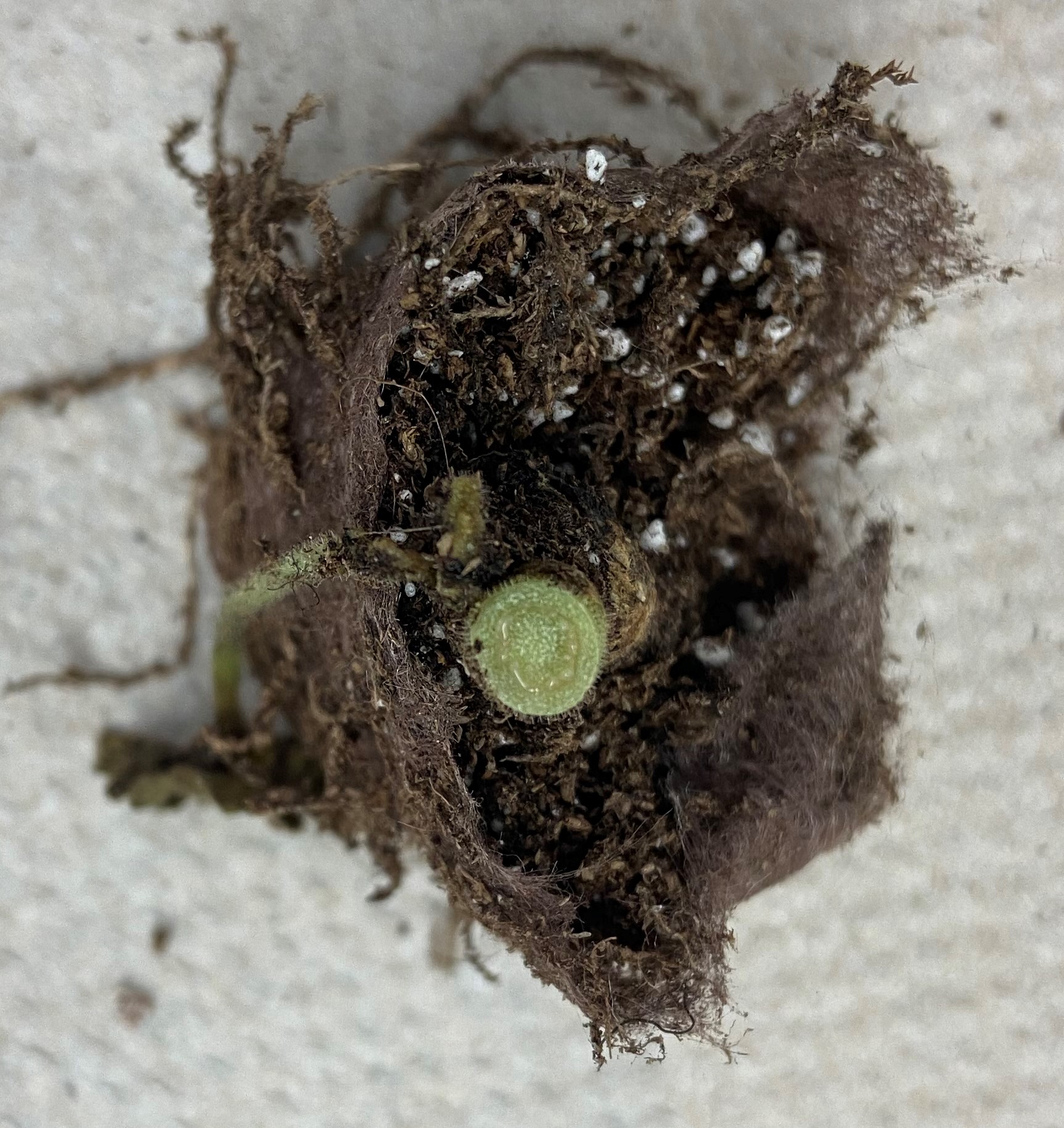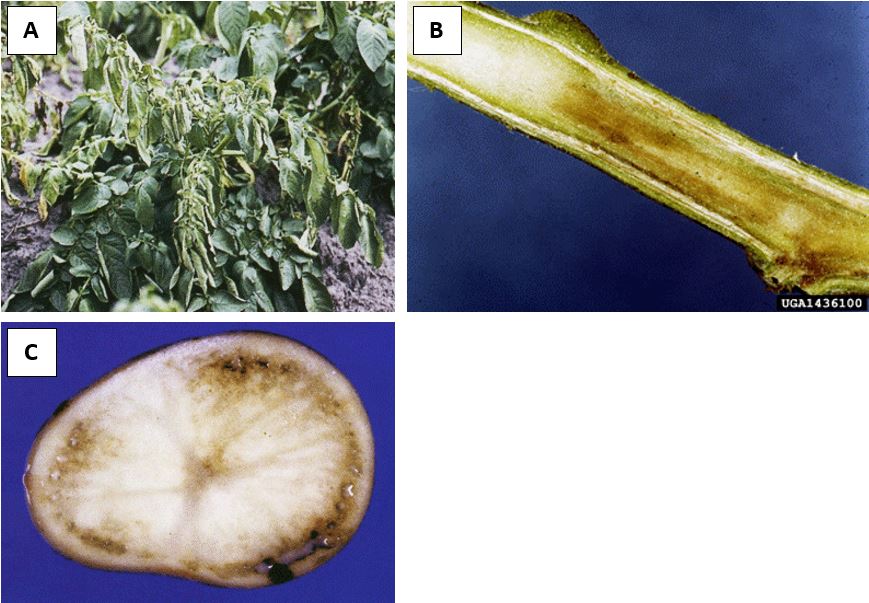Ralstonia solanacearum race 3 biovar 2 detected in greenhouse geraniums
Local officials are involved due to the tight regulation of this bacterial pathogen.

Ralstonia solanacearum is a bacterial plant pathogen with potentially wide-ranging implications. In general, Ralstonia solancearum can be thought of as a complex pathogen that is broken into groups that are designated with the terms race and biovar. The race designations are made based on the host range of the bacterium. One specific type, race 3 biovar 2, is of significant concern in the United States, where it is not known to be established. In 2003 and again in 2004, race 3 biovar 2 was detected in geraniums that were imported to the U.S. All associated plant material was destroyed. While some instances of R. solanacerum are the result of infections from endemic races, detections of race 3 biovar 2 are subject to strict regulations as dictated by the Federal Select Agent Program.
Unfortunately, the greenhouse industry is once again working to respond to a detection of R. solancearum race 3 biovar 2 in geraniums that originated offshore. While there are other races of Ralstonia solanacearum, R. solanacearum race 3 biovar 2 is designated as a federal select agent. This means that this pathogen has the potential to pose a severe threat and is of high regulatory concern. Because of this, very specific diagnostics and chains of sample custody/information flow must be followed. In Michigan, this process is being coordinated by regulatory specialists, including the United States Department of Agriculture Plant Health (USDA APHIS PPQ) and the Michigan Department of Agriculture and Rural Development (MDARD). Greenhouses that received suspect material can expect to be contacted and inspected, and samples may be collected for diagnostic testing.
Host range
Ralstonia solanacearum can infect hundreds of different plant species, however, race 3 biovar 2 is primarily limited to geranium, potato, tomato and solanaceous weeds. Common weed hosts include Carolina horsenettle, climbing nightshade and stinging nettle. There are rare but occasional reports of this strain also infecting eggplant and pepper. Isolates of this strain may readily move between and cause disease in any of these hosts. Infected plants, cuttings, seed and other plant parts all serve as potential sources of inoculum. Plant debris, tubers, or roots may also act as reservoirs, enabling the bacterium to persist in the soil between growing seasons.
Geranium symptoms and pathogen spread
Ralstonia solanacearum causes the disease southern wilt of geranium. Early symptoms of this disease include wilting leaves. Initially, affected plants may appear to recover during the night when the greenhouse temperatures are cooler. The wilted leaves may be green initially but then appear to dry, turning from yellow to brown. Sometimes there are wedge-shaped lesions that expand towards the leaf margins. Other leaves may show an upward curling. Also, the margins of the leaf can become yellow then brown (Photo 1).
As the disease progresses and becomes more severe, the stem may turn black and collapse and the plant dies. If the stem of a severely diseased plant is cut crosswise, a sticky, milk-colored ooze may be seen (Photo 2). A freshly-cut stem surface can also be placed into a glass of water to better see the white ooze streaming out of the infected stem.
Geraniums infected by this bacterium may develop symptoms quickly especially at temperatures greater than 85 degrees Fahrenheit. However, infected geraniums may contain the bacterium for long periods of time and not develop wilting or other disease symptoms. An infected plant that appears healthy can serve as a reservoir of the bacterium and contribute to its spread. The bacterium can survive in water and soil depending on the soil type and temperature. Water effluent from infected plants typically contains the bacterium that can then infect and contaminate other plants. For instance, the water draining from infected geraniums in baskets hanging overhead would likely contain this pathogen and spread it to the plants underneath.

Potato/tomato symptoms
Potato and tomato are both economically important crops in Michigan, both are also susceptible to R. solancearum. The disease is known as brown rot (or bacterial wilt) of potato and bacterial wilt of tomato. In both crops, the first symptoms begin as wilting or flagging in young leaves near the top or outer branches of the plant (Photo 3A). This is especially apparent in warm weather and during the hottest part of the day. Early in the infection, the internal tissues of cut stems may be streaked brown (Photo 3B) and turn entirely brown as disease progresses.
In favorable conditions, plants can become rapidly and entirely yellowed, wilted and desiccated resulting in plant death. In potato, a gray to brown discoloration appears in the tubers (Photo 3C); this begins near the outer vascular ring and then extends into the center. Milky-white bacterial ooze may be visible in freshly cut tubers, stems, and on potato eyes.

Testing for the pathogen
The USDA’s Response Plan will be used collaboratively with USDA PPQ and MDARD Pesticide and Plant Pest Management (PPM) to direct the collection of samples from affected greenhouses. Samples of geraniums and other host plants may be collected for testing by the regulatory inspection staff. Diagnostic testing of plant material in greenhouses impacted by this emergency action can only be done by regulatory inspection staff and associated labs. The National Plant Diagnostic Network, a network of both university and state department of agriculture labs across the country, is working to help the USDA with the necessary testing. The goal is to maximize testing capacity and minimize any potential delays in sample processing.
Detection of this pathogen often begins with a more general screening test. It is important to note that determination of the specific race and biovar cannot be done in many of our university diagnostic labs. Confirmation of the race 3 biovar 2 can only be done by USDA APHIS PPQ; diagnostic labs are required to forward suspect samples to this lab for further testing. The subsequent diagnostic results will come from USDA and cannot be released until approval is given by USDA.



 Print
Print Email
Email

